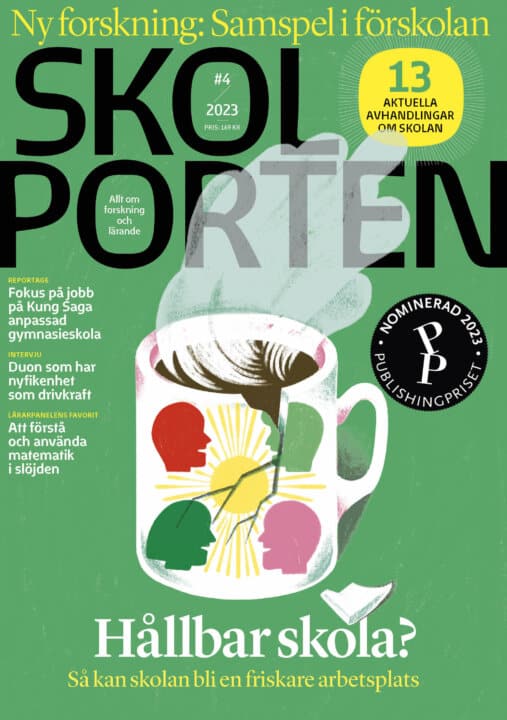Matematikundervisningens konkreta gestaltning. En studie av kommunikationen lärare-elev och matematiklektionens didaktiska ramar
Varför lär sig inte svenska skolelever matematik som de ska, trots en mängd olika satsningar på saken under 30 års tid? Madeleine Löwings svar på frågan, efter att hon närstuderat hur matematikundervisning idag går till, är att det beror på en mängd faktorer som samverkar på ett för undervisningen och eleverna negativt sätt.
– Det räcker inte att behärska matematik och pedagogik. Vad det handlar om är att ha en ämnesdidaktisk kunskap i relation till individen och situationen. Att veta hur en individ bygger upp sitt kunnande i matematik. Det är en samhällsvetenskaplig kunskap som matematiker som ska undervisa måste ha.
Madeleine Löwing
Professor Berner Lindström, Göteborgs universitet
Professor Gunnar Gjone, universitetet i Oslo
Hej världen!
2004-04-02
Matematikundervisningens konkreta gestaltning. En studie av kommunikationen lärare-elev och matematiklektionens didaktiska ramar
The concrete formation of mathematics teaching.A study of communication between teachers and pupils and the educational framework of mathematical classrooms.
Institutionen för pedagogik och didaktik
Hej världen!
The concrete formation of mathematics teaching.A study of communication between teachers and pupils and the educational framework of mathematical classrooms.
Adequate help from the teachers is required in order that the pupils reach the goals that are laid down in the guidelines of the school. It is therefore necessary that they master a mathematical theory relevant for their profession. This means that it must be possible for the teachers to convey their mathematical knowledge in such a way that all pupils learn and develop mathematical knowledge.
In order to communicate a mathematical content, the teachers choose suitable working methods and forms. These choices are in turn dependent on the physical and administrative frames of the school. Against this background, my research question is the following: How do teachers organize the mathematical education and how do they communicate a mathematical content to the pupils?
My method is based on a more modern version of the so-called frame factor theory, where the focus is on the role of the teacher in the classroom situation. It is also based on a theory that shows how the pupils develop their mathematical knowledge that is a theory for mathematics education.
My empirical data consist of seven mathematics lessons from grades 4-9 in the compulsory school. During these lessons all communication around the teacher was documented with the help of a microphone fastened on the teacher. Two independent observers registered all other activity during the classes. I have also analyzed the content of the educational material that was used during the lessons. In order to give a correct framework to their work, all teachers were interviewed before as well as after the classes.
On a macro level, I have studied the teachers choices of working method and form, which I call the variable frames. As it turned out, the choices of such frames were often less well chosen in relation to other frames the goal of the education. In several cases these frames even counteracted each other. This contributed to the fact that some pupils did not get adequate instruction and help during the classes.
On a micro level, I noted that most teachers did not find out what pre-knowledge the pupils had. Another observation was that they expressed the goals of the education in terms of how to do not how to understand, something which was also mirrored in their communication with the pupils. Furthermore, most of the teachers did not use an adequate language with regard to the content of the education and the comprehension of the pupils, which caused conflicts in their communication with the pupils. The result was often that the teachers and the pupils talked passed each other, which confused the pupils and caused them to stop working after half the lesson had passed.
By using methodical thinking when analyzing the teachers choice of frames and their way of communicating a mathematical content, it is possible to understand parts of the complex teaching situation in the school. This gives me an opportunity to explain several of the problems that the pupils in the compulsory school have in learning mathematics, according to recent evaluations.
Relaterade länkar

Biologi
 Åk 7–Vux
Åk 7–Vux Hållbar utveckling i förskolan
 Fsk
Fsk 




